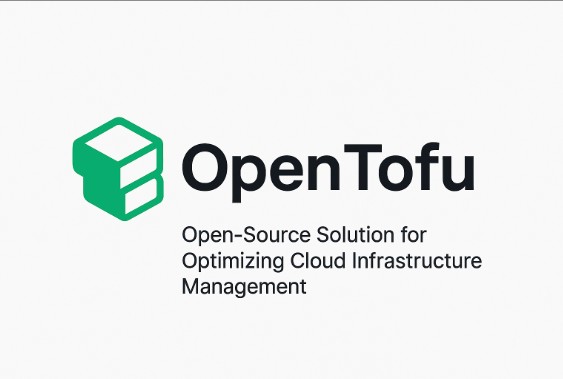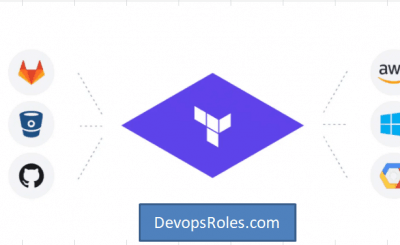Table of Contents
- 1 Introduction to OpenTofu
- 2 What is OpenTofu?
- 3 How OpenTofu Optimizes Cloud Infrastructure Management
- 4 Advanced OpenTofu Use Cases
- 5 Frequently Asked Questions (FAQ)
- 6 Conclusion
Introduction to OpenTofu
Cloud infrastructure management has always been a challenge for IT professionals. With numerous cloud platforms, scalability issues, and the complexities of managing large infrastructures, it’s clear that businesses need a solution to simplify and optimize this process. OpenTofu, an open-source tool for managing cloud infrastructure, provides a powerful solution that can help you streamline operations, reduce costs, and enhance the overall performance of your cloud systems.
In this article, we’ll explore how OpenTofu optimizes cloud infrastructure management, covering its features, benefits, and examples of use. Whether you’re new to cloud infrastructure or an experienced DevOps engineer, this guide will help you understand how OpenTofu can improve your cloud management strategy.
What is OpenTofu?
OpenTofu is an open-source Infrastructure as Code (IaC) solution designed to optimize and simplify cloud infrastructure management. By automating the provisioning, configuration, and scaling of cloud resources, OpenTofu allows IT teams to manage their infrastructure with ease, reduce errors, and speed up deployment times.
Unlike traditional methods that require manual configuration, OpenTofu leverages code to define the infrastructure, enabling DevOps teams to create, update, and maintain infrastructure efficiently. OpenTofu can be integrated with various cloud platforms, such as AWS, Google Cloud, and Azure, making it a versatile solution for businesses of all sizes.
Key Features of OpenTofu
- Infrastructure as Code: OpenTofu allows users to define their cloud infrastructure using code, which can be versioned, reviewed, and easily shared across teams.
- Multi-cloud support: It supports multiple cloud providers, including AWS, Google Cloud, Azure, and others, giving users flexibility and scalability.
- Declarative syntax: The tool uses a simple declarative syntax that defines the desired state of infrastructure, making it easier to manage and automate.
- State management: OpenTofu automatically manages the state of your infrastructure, allowing users to track changes and ensure consistency across environments.
- Open-source: As an open-source solution, OpenTofu is free to use and customizable, making it an attractive choice for businesses looking to optimize cloud management without incurring additional costs.
How OpenTofu Optimizes Cloud Infrastructure Management
1. Simplifies Resource Provisioning
Provisioning resources on cloud platforms often involves manually configuring services, networks, and storage. OpenTofu simplifies this process by using configuration files to describe the infrastructure components and their relationships. This automation ensures that resources are provisioned consistently and correctly across different environments, reducing the risk of errors.
Example: Provisioning an AWS EC2 Instance
Here’s a basic example of how OpenTofu can be used to provision an EC2 instance on AWS:
provider "aws" {
region = "us-west-2"
}
resource "aws_instance" "example" {
ami = "ami-12345678"
instance_type = "t2.micro"
}
This script will automatically provision an EC2 instance with the specified AMI and instance type.
2. Infrastructure Scalability
Scalability is one of the most important considerations when managing cloud infrastructure. OpenTofu simplifies scaling by allowing you to define how your infrastructure should scale, both vertically and horizontally. Whether you’re managing a single instance or a large cluster of services, OpenTofu’s ability to automatically scale resources based on demand ensures your infrastructure is always optimized.
Example: Auto-scaling EC2 Instances with OpenTofu
resource "aws_launch_configuration" "example" {
image_id = "ami-12345678"
instance_type = "t2.micro"
security_groups = ["sg-12345678"]
}
resource "aws_autoscaling_group" "example" {
desired_capacity = 3
max_size = 10
min_size = 1
launch_configuration = aws_launch_configuration.example.id
}
This configuration will automatically scale your EC2 instances between 1 and 10 based on demand, ensuring that your infrastructure can handle varying workloads.
3. Cost Optimization
OpenTofu can help optimize cloud costs by automating the scaling of resources. It allows you to define the desired state of your infrastructure and set parameters that ensure you only provision the necessary resources. By scaling resources up or down based on demand, you avoid over-provisioning and minimize costs.
4. Ensures Consistent Configuration Across Environments
One of the most significant challenges in cloud infrastructure management is ensuring consistency across environments. OpenTofu helps eliminate this challenge by using code to define your infrastructure. This approach ensures that every environment (development, staging, production) is configured in the same way, reducing the likelihood of discrepancies and errors.
Example: Defining Infrastructure for Multiple Environments
provider "aws" {
region = "us-west-2"
}
resource "aws_instance" "example" {
ami = "ami-12345678"
instance_type = var.instance_type
}
By creating separate workspaces for each environment, OpenTofu will automatically manage the configuration for each environment, ensuring consistency.
5. Increased Developer Productivity
With OpenTofu, developers no longer need to manually configure infrastructure. By using Infrastructure as Code (IaC), developers can spend more time focusing on developing applications instead of managing cloud resources. This increases overall productivity and allows teams to work more efficiently.
Advanced OpenTofu Use Cases
Multi-cloud Deployments
OpenTofu’s ability to integrate with multiple cloud providers means that you can deploy and manage resources across different cloud platforms. This is especially useful for businesses that operate in a multi-cloud environment and need to ensure their infrastructure is consistent across multiple providers.
Example: Multi-cloud Deployment with OpenTofu
provider "aws" {
region = "us-west-2"
}
provider "google" {
project = "my-gcp-project"
}
resource "aws_instance" "example" {
ami = "ami-12345678"
instance_type = "t2.micro"
}
resource "google_compute_instance" "example" {
name = "example-instance"
machine_type = "f1-micro"
zone = "us-central1-a"
}
This configuration will deploy resources in both AWS and Google Cloud, allowing businesses to manage a multi-cloud infrastructure seamlessly.
Integration with CI/CD Pipelines
OpenTofu integrates well with continuous integration and continuous deployment (CI/CD) pipelines, enabling automated provisioning of resources as part of your deployment process. This allows for faster and more reliable deployments, reducing the time it takes to push updates to production.
Frequently Asked Questions (FAQ)
What is Infrastructure as Code (IaC)?
Infrastructure as Code (IaC) is the practice of managing and provisioning infrastructure through code rather than manual processes. This enables automation, versioning, and better control over your infrastructure.
How does OpenTofu compare to other IaC tools?
OpenTofu is a powerful open-source IaC solution that offers flexibility and multi-cloud support. While tools like Terraform and AWS CloudFormation are popular, OpenTofu’s open-source nature and ease of use make it a compelling choice for teams looking for an alternative.
Can OpenTofu be used for production environments?
Yes, OpenTofu is well-suited for production environments. It allows you to define and manage your infrastructure in a way that ensures consistency, scalability, and cost optimization.
Is OpenTofu suitable for beginners?
While OpenTofu is relatively straightforward to use, a basic understanding of cloud infrastructure and IaC concepts is recommended. However, due to its open-source nature, there are plenty of community resources to help beginners get started.

Conclusion
OpenTofu provides an open-source, flexible, and powerful solution for optimizing cloud infrastructure management. From provisioning resources to ensuring scalability and reducing costs, OpenTofu simplifies the process of managing cloud infrastructure. By using Infrastructure as Code, businesses can automate and streamline their infrastructure management, increase consistency, and ultimately achieve better results.
Whether you’re just starting with cloud management or looking to improve your current infrastructure, OpenTofu is an excellent tool that can help you optimize your cloud infrastructure management efficiently. Embrace OpenTofu today and unlock the potential of cloud optimization for your business.
For more information on OpenTofu and its features, check out the official OpenTofu Documentation.Thank you for reading the DevopsRoles page!
